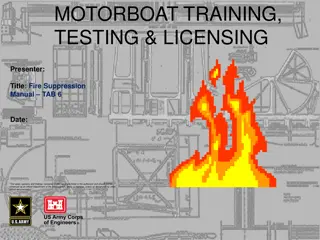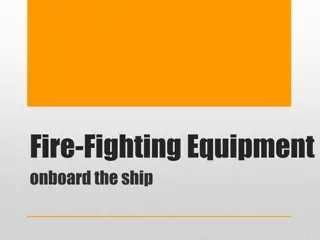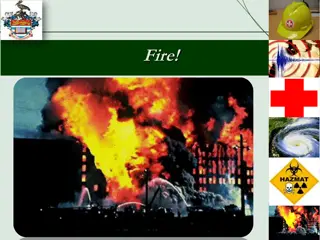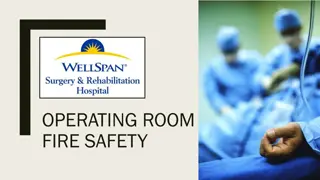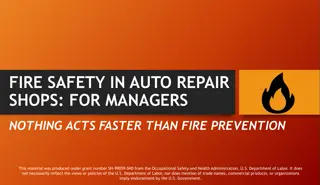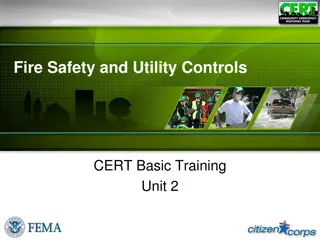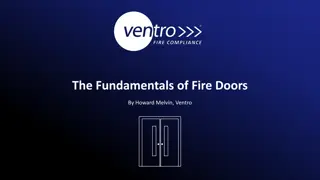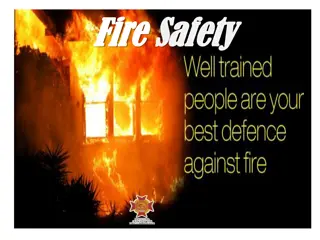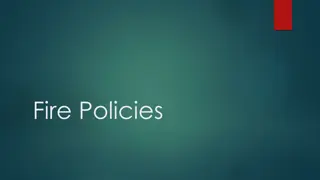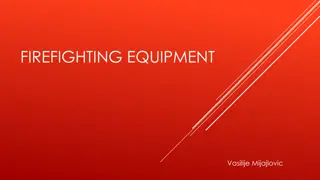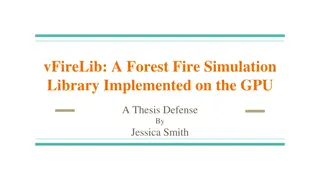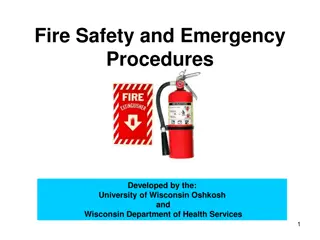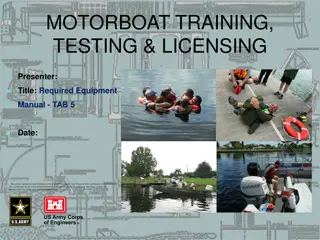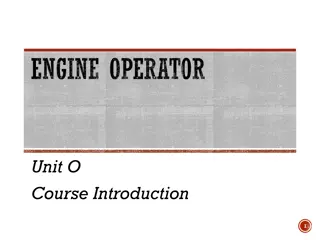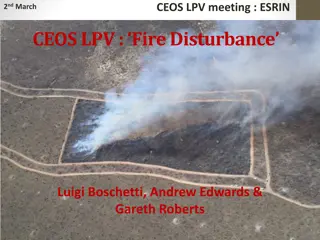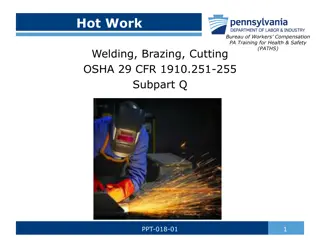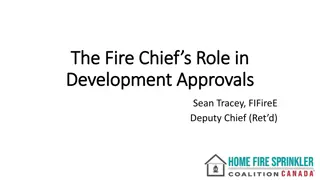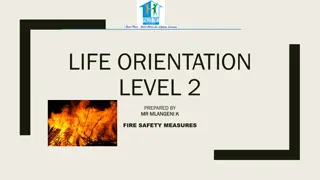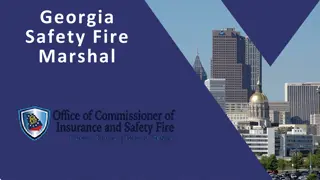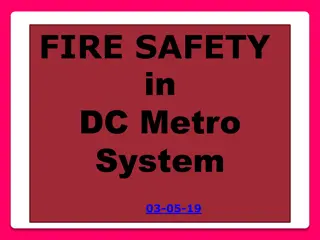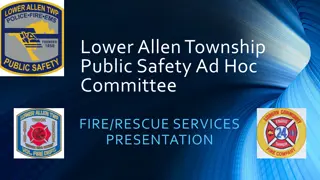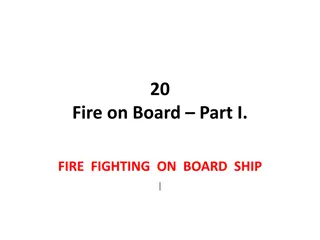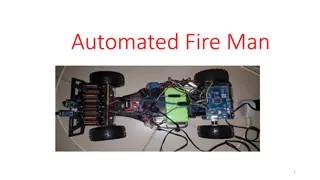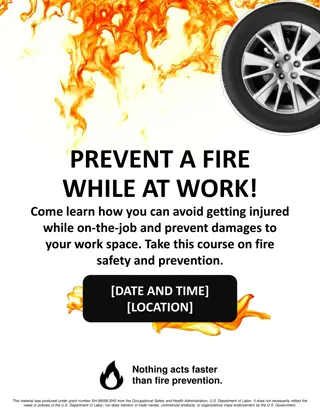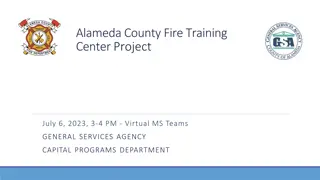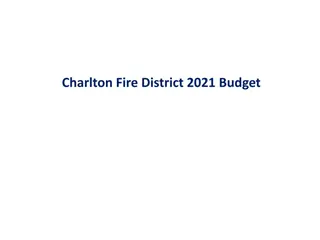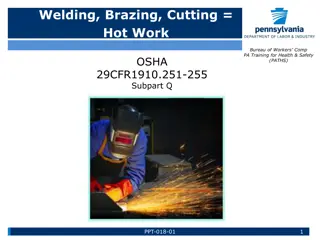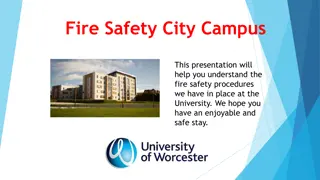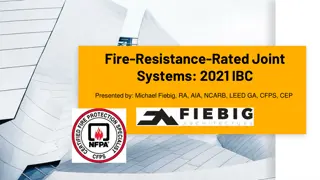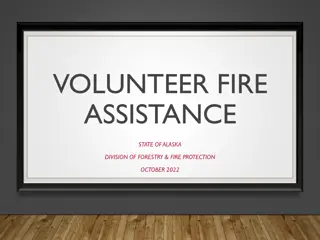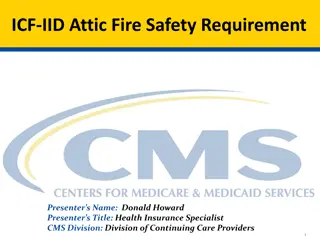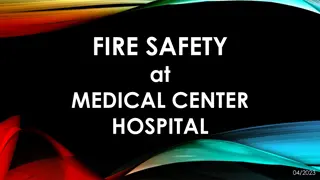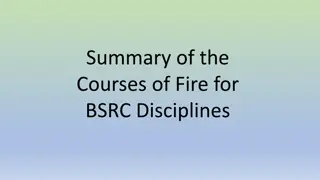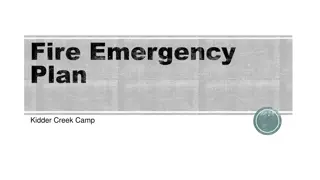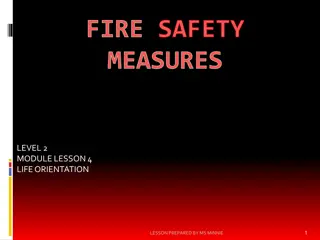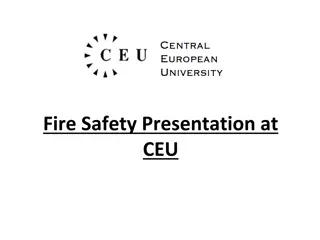Fire Extinguisher Training Overview
Explore the essentials of fire extinguisher training, including understanding the combustion process, fire classes, types of extinguishers, operating procedures, and key firefighting concepts. Gain insights into fire classes, extinguisher anatomy, effective types, and more to enhance your fire safety knowledge.
Download Presentation

Please find below an Image/Link to download the presentation.
The content on the website is provided AS IS for your information and personal use only. It may not be sold, licensed, or shared on other websites without obtaining consent from the author. Download presentation by click this link. If you encounter any issues during the download, it is possible that the publisher has removed the file from their server.
E N D
Presentation Transcript
FIRE EXTINGUISHER TRAINING
FIRE EXTINGUISHER TRAINING Objectives Understand the combustion process and different fire classes. Understand fire extinguishers types, operating procedures, capabilities and limitations. Understand basic firefighting concepts: P.A.S.S.
FIRE EXTINGUISHER TRAINING The combustion process The fire tetrahedron
FIRE EXTINGUISHER TRAINING Fire classes A Trash, wood, paper C Electrical equipment Wood. Cloth. Paper. Rubber. Many plastics. Energized electrical equipment. B Liquids and grease Gasoline. Oil. Grease. Tar. Oil-based paint. Lacquer. Flammable gasses.
FIRE EXTINGUISHER TRAINING Fire extinguisher anatomy Discharge lever Pressure gauge (not found on CO2 extinguishers) Discharge locking pin and seal Discharge hose Carrying Handle Data plate Body Discharge nozzle Discharge orifice
FIRE EXTINGUISHER TRAINING Fire class Effective extinguisher types Pressurized water Multipurpose dry chemical Trash, wood, paper Liquids and grease Multipurpose dry chemical Carbon dioxide Electrical equipment Multipurpose dry chemical Carbon dioxide
FIRE EXTINGUISHER TRAINING Fire extinguisher types A Trash Wood Paper Pressurized water For class A fires only. Discharges 2.5 gal. water at 150 to 175 psi (up to 1 minute discharge time). Has pressure gauge to allow visual capacity check. Has a 30 to 40 ft. maximum effective range. Can be started and stopped as necessary. Extinguishes by cooling burning material below the ignition point. A Trash Wood Paper B Liquids Grease B Liquids Grease C Electrical Equipment C Electrical Equipment
FIRE EXTINGUISHER TRAINING Fire extinguisher types A Trash Wood Paper A Trash Wood Paper Carbon dioxide (CO2) For class B or C fires. Discharges 2.5 to 100 lb. of CO2 gas at 150-200 psi (8-30 seconds discharge time). Has no pressure gauge--capacity verified by weight. Has a 3 to 8 ft. maximum effective range. Extinguishes by smothering burning materials. Effectiveness decreasesas temperature of burning material increases. B Liquids Grease B Liquids Grease C Electrical Equipment C Electrical Equipment
FIRE EXTINGUISHER TRAINING Fire extinguisher types A Trash Wood Paper A Trash Wood Paper Multipurpose dry chemical For class A , B or C fires. Discharges 2.5 to 20 lb. dry chemical (ammonium phosphate) pressurized to 50-200 psi by nitrogen gas (8-25 seconds discharge time). Has pressure gauge to allow visual capacity check. Has a 5 to 20 ft. maximum effective range. Extinguishes by smothering burning materials. B Liquids Grease B Liquids Grease C Electrical Equipment C Electrical Equipment
FIRE EXTINGUISHER TRAINING Extinguisher type Works by Effective against Cooling and smothering Pressurize water Carbon dioxide Cooling and smothering Multipurpose dry chemical Smothering
FIRE EXTINGUISHER TRAINING Firefighting decision criteria Know department emergency procedures and evacuation routes. Know locations of extinguishers in your area and how to use them. Always notify operator or management regardless of fire size. Avoid smoky conditions. Ensure area is evacuated.
FIRE EXTINGUISHER TRAINING Firefighting decision criteria Don t attempt to fight unless: Alarm is sounded. Fire is small and contained. You have safe egress route (can be reached without exposure to fire). Available extinguishers are rated for size and type of fire. If in doubt, evacuate!
FIRE EXTINGUISHER TRAINING Summary Combustion process. Class A, B, C fires. Types of portable fire extinguishers: Operating procedures. Capabilities and limitations. Basic firefighting concepts: P.A.S.S.


